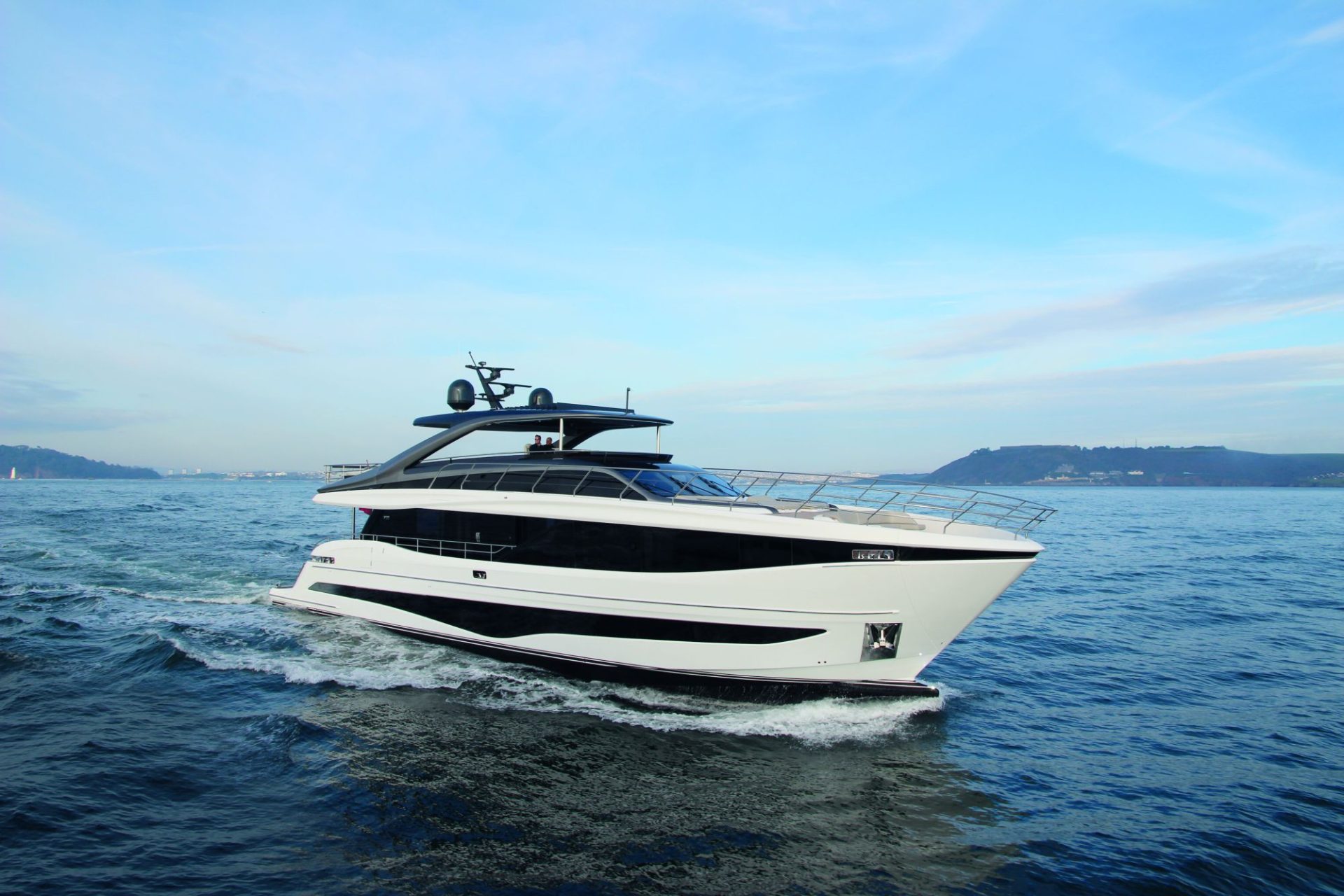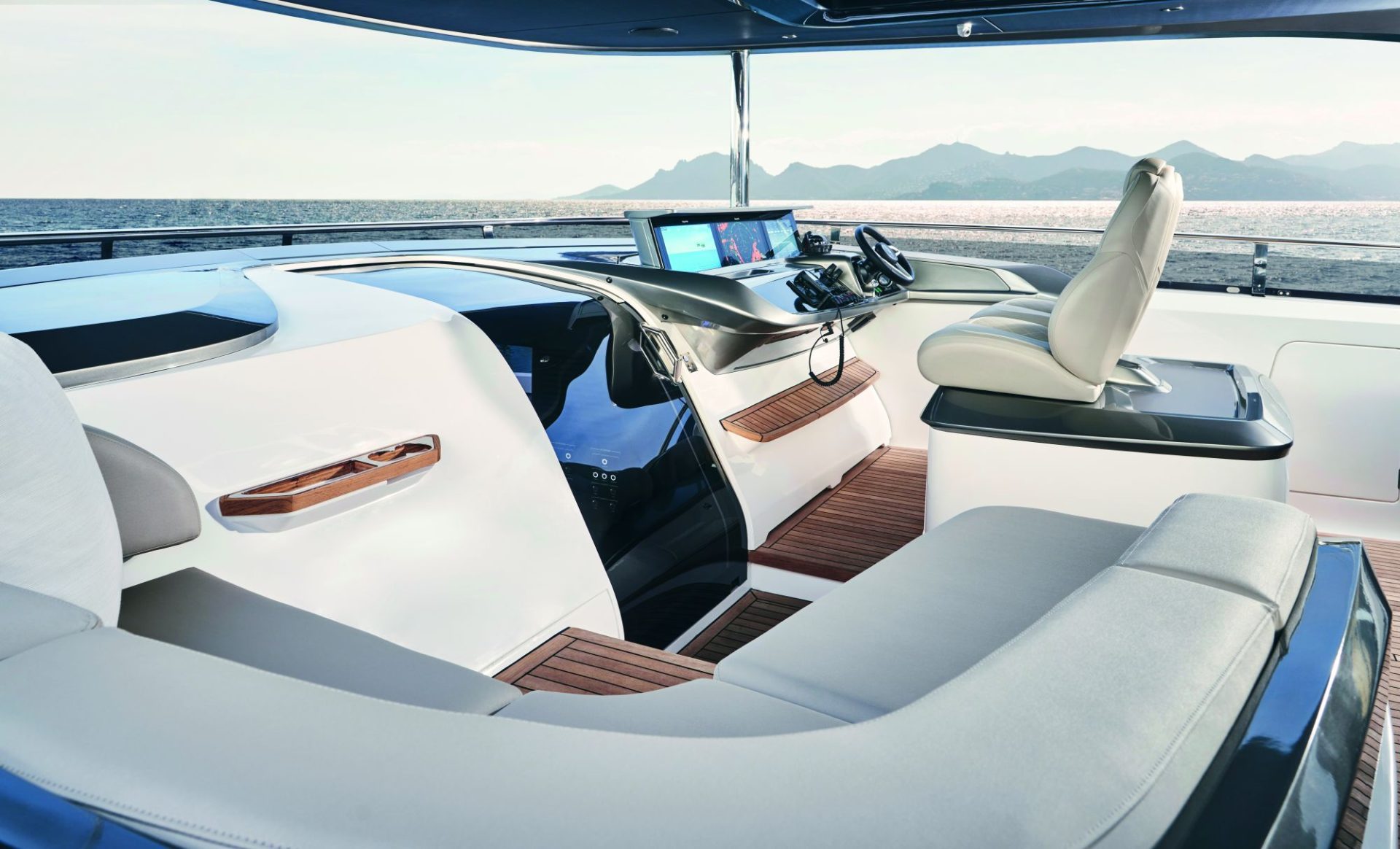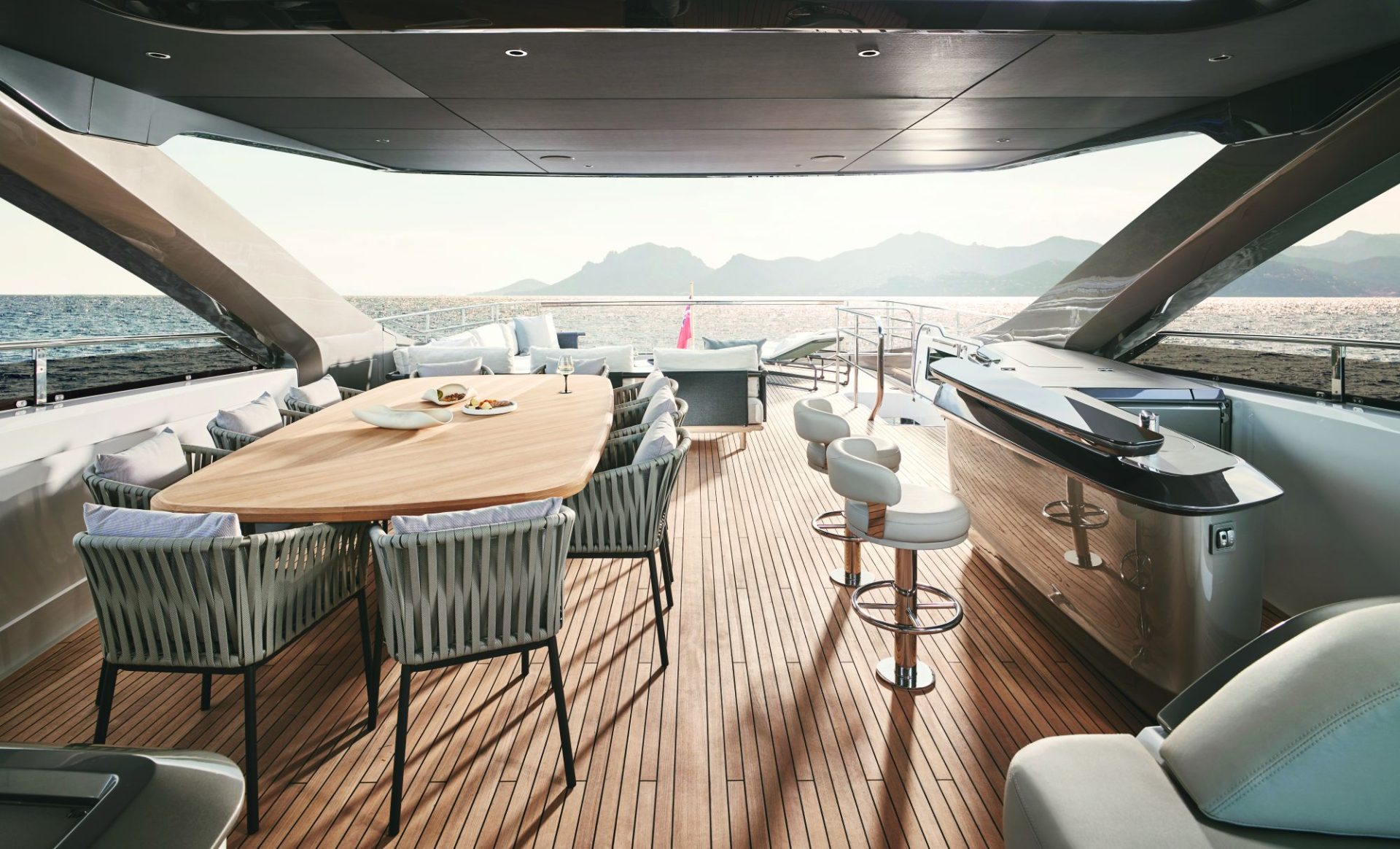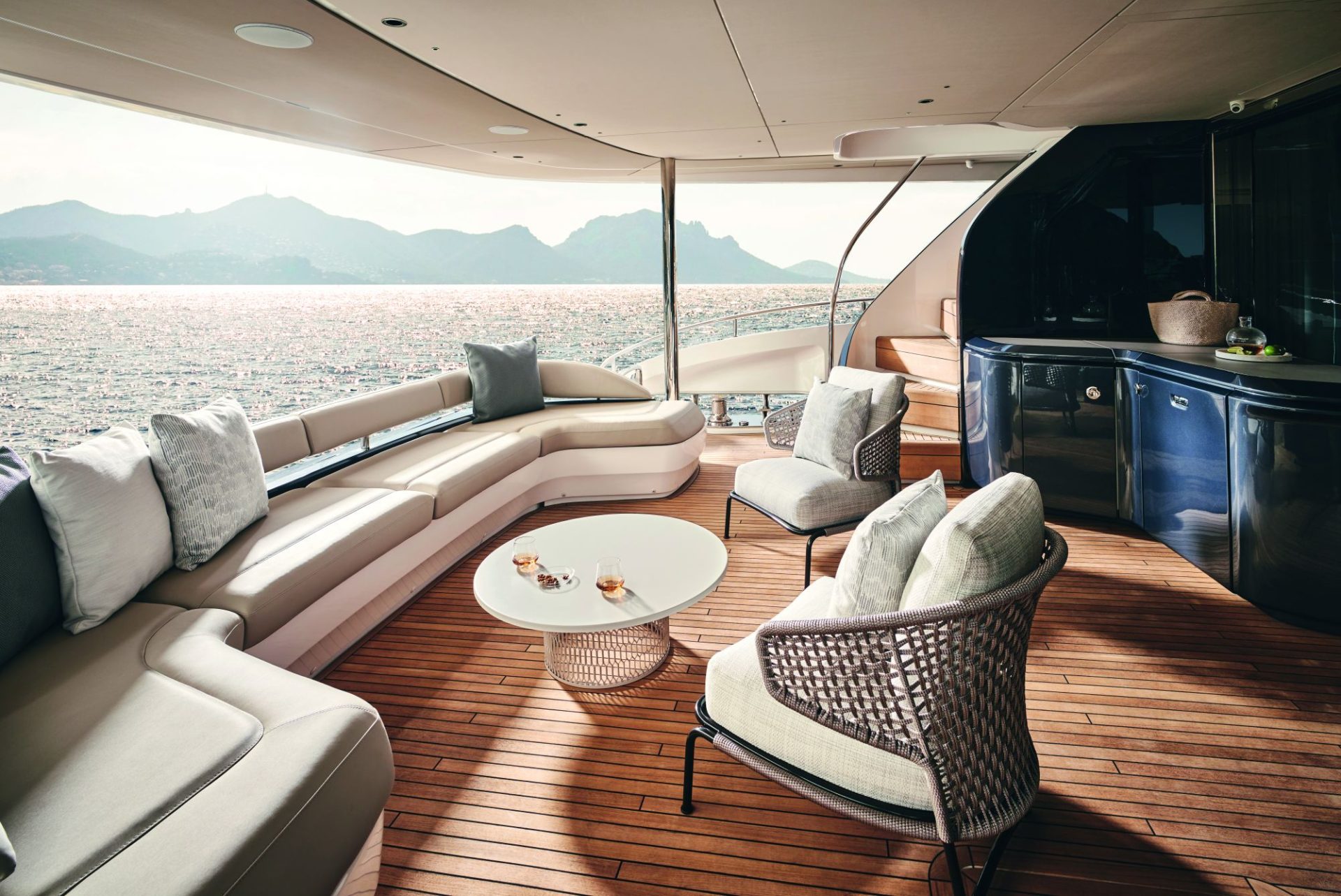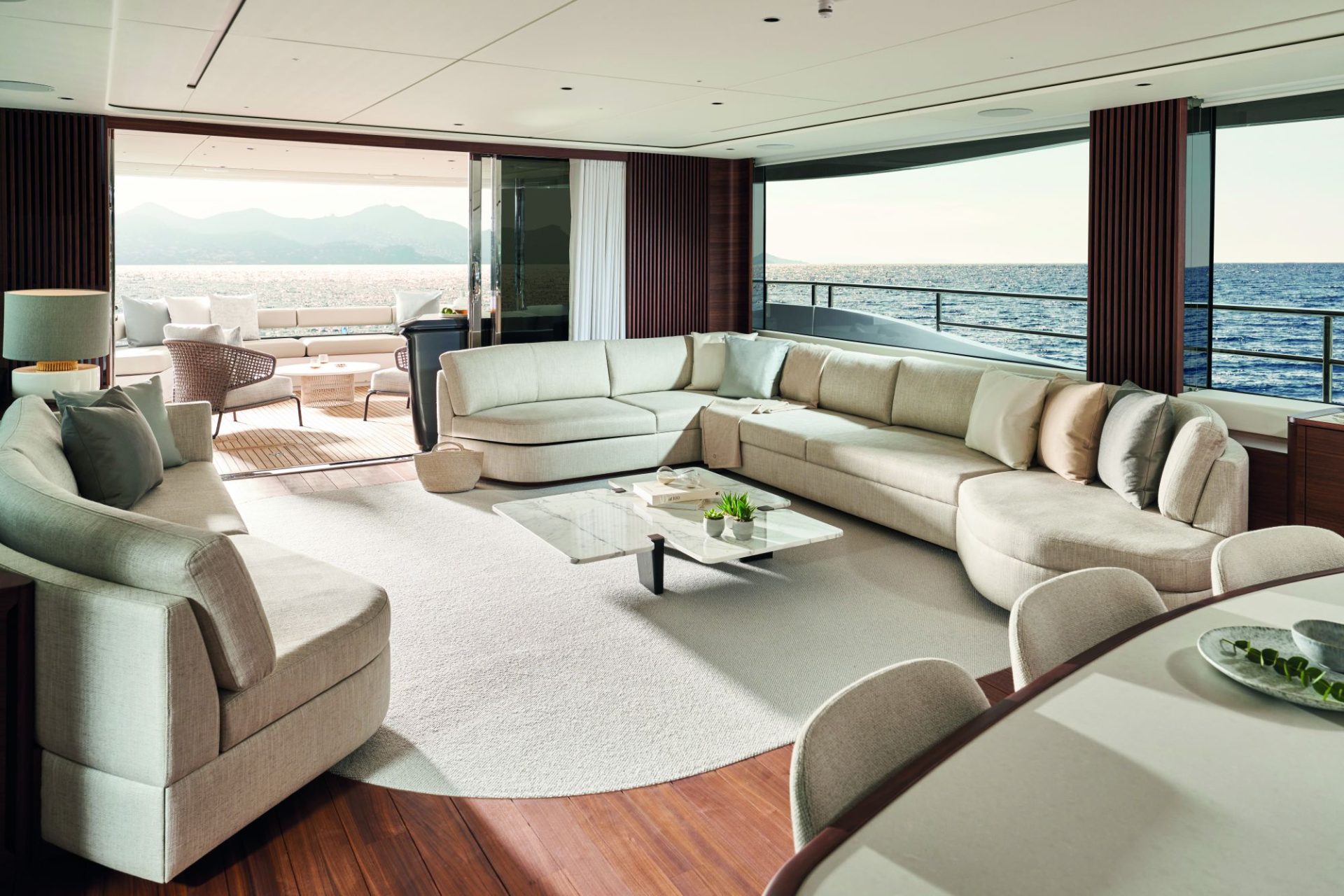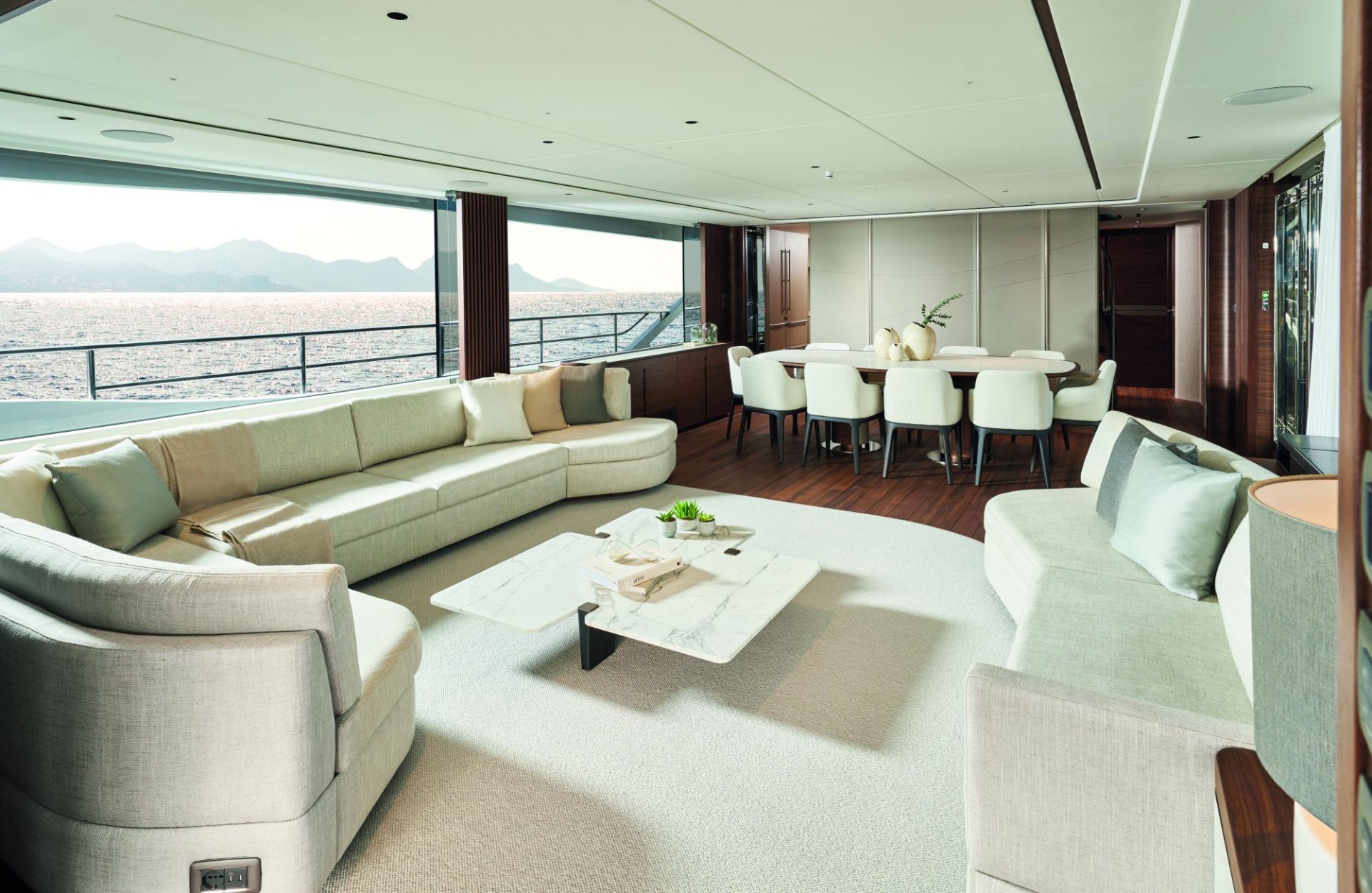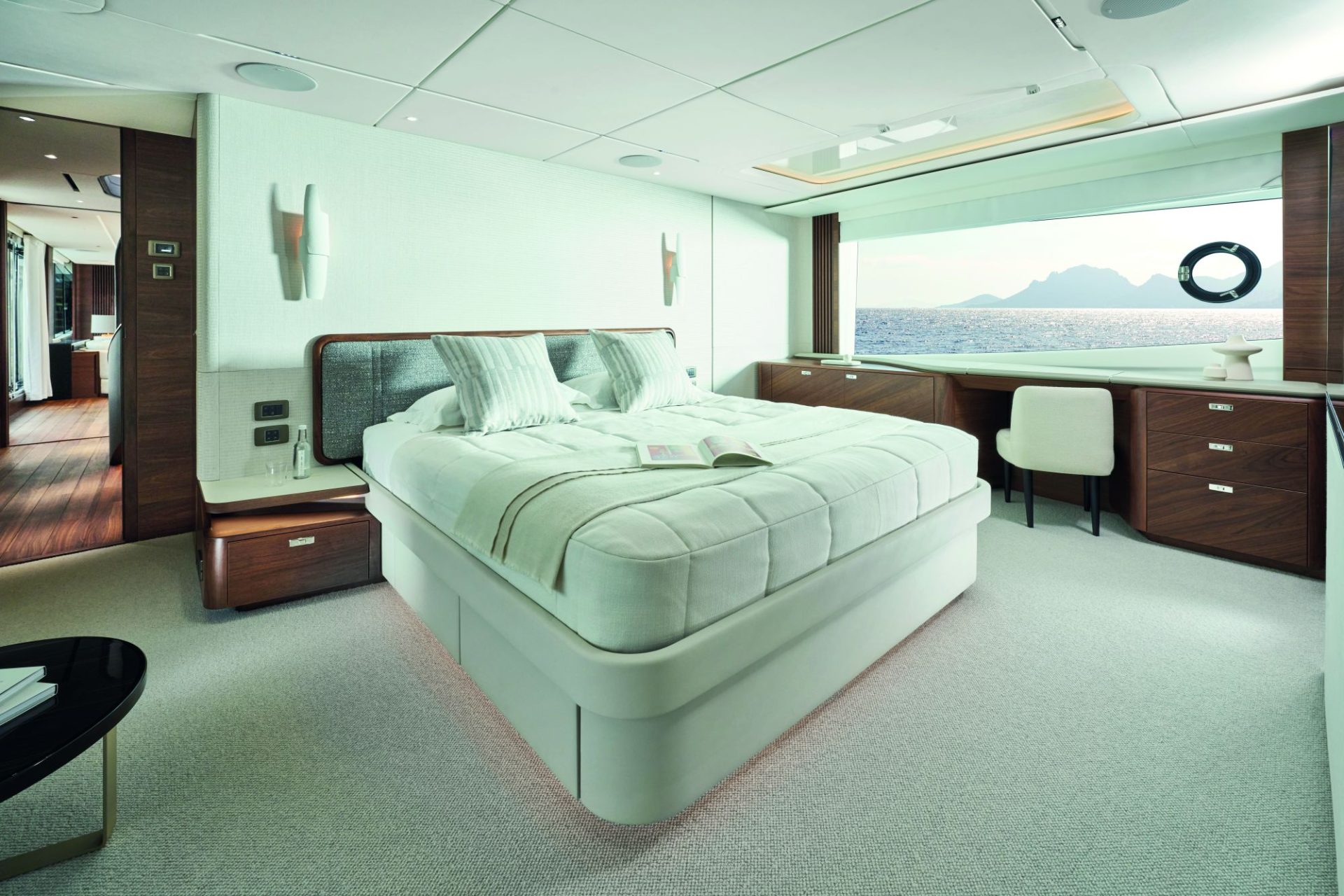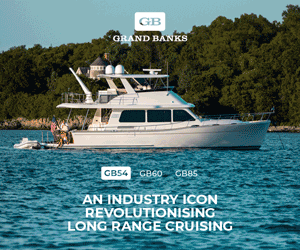Genius in the genes
The X95 broke a lot of rules when it was launched three years ago, and there was always the danger that the more classic Y95 variant would feel mundane by comparison. However, nothing could be further from the truth. The X and Y are not opposites, but sisters – same DNA, different wardrobes.
Written by Charlotte Thomas
26 October 2023
When Princess’s X95 burst onto the scene, it signified a bold new direction for the quietly spoken British brand. The striking profile, clever Super Flybridge layout and intriguing interior layout options spoke to a shift in the builder’s direction under the stewardship of ex-McLaren boss Anthony Sheriff.
With a gloves-off approach to convention and a determined drive to appeal to a new customer base, it also marked a fundamental shift in the way Princess approached design and construction.
The focus on platform building – using a single hull and engineering platform to create different models within the range – is a proven technique the superyacht industry started to develop at the end of the 1990s. In this case, the somewhat avant-garde X95 was always going to have a sister in the form of the Y95 – what had been termed, perhaps somewhat unfairly, as the more conventional option.
The first Y95 was due to be built early in the run, but such has been the popularity of the X95 variant that it wasn’t until build slot 19 that the first Y95 began to take shape. Does that speak to the redundancy of the more recognisable style of yacht the Y95 represents? As it turns out, no – and to dismiss the Y95 as the staid sibling to the upstart X would be a huge mistake.
This is an elegant yet thoroughly modern yacht that offers all the appeal of classic yachting but with more than a handful of features that subtly borrow from her more alternative sister’s wardrobe.
Take the flybridge, for example. Under the sweeping hardtop structure that mirrors the upper saloon profile of the X, which in this case features optional louvres, the Y offers everything you’d expect – a huge deck area, a forward moulded lounge to port and a fly helm to starboard, (next to the pilothouse door), that has a neat hidden console on a riser housing three large Raymarine MFDs.
There’s a large counter unit with sink, fridge and double grill, and aft on hull # 1, there’s a giant, freestanding L-shaped lounge, although the owner was due to replace this with a spa pool.
Options abound, too – this first Y95 has a pop-up TV set into the wet bar, an audio system throughout upgraded from the standard Naim, and the owner has also opted for the hidden crane aft that means a Williams 505 tender – or a humble jetski – can be carried up top.
Forward, the idea of a single level is seen here with an easy portside walkway to twin sunpads in front of the pilothouse windscreen, with a cutaway forward offering seating and an optional cooler for a view over the bow and the foredeck area. The return walkway to starboard drops down to the main deck, creating a seamless circular route to get around the yacht.
Single-level living areas are a theme throughout, and on the main deck that means a straight run from the aft deck through full retracting sliding glass doors and into the generous saloon and forward dining area.
Like the X95, the Y’s extensive glazing makes the interior a real joy to sit in, although unlike the X, the main deck options are more limited – and perhaps more classic, for want of a better word.
In part, this is because of the raised pilothouse, which negates the need for a main deck helm but also confines some of the general arrangement options compared to the positively freestyle main deck of the X. “The structural integrity of the Y95 centres around the pilothouse,” explains Gareth Sandy, Technical Sales Manager at Princess.
However, there are plenty of variations and options that owners can specify, and at this top end of the Princess range, customisation is a given.
“We went into the 95 platform with a lot of concept ideas for layout options to mitigate customers asking for specific layouts, and it failed miserably because customers at this end of the range have grown up with the expectation around Princess,” smiles Sandy.
“There are quite a few custom 95s out there now,” he continues. “We’ve done a lowerdeck walk-in wardrobe in place of one of the twin cabins, and we’ve done gyms and formal dining areas separated from the rest of the boat. Layout variation is quite high on the 95 line – the factory hates us for doing it because it’s more work for them, but it’s a necessity.”
Forward, there’s a main deck master that stretches across the full beam of the boat, with large horizontal windows in the hull creating a sublime and generous space – and point of fact, the dramatic sweep of topsides glass is the longest Princess has installed on a yacht . One deck down, the options are the same as for the X95 – the crew area is located aft, and owners can opt for an aft garage or a beach club.
There’s a full-beam VIP cabin midships with a handful of furniture options – the outboard sofa in which you can sink and watch the waves go by underway through the yawn of hull glazing would be my call.
Forward of the VIP, there are two ensuite twin/double cabins either side of the lower guest lobby that can also be specified with pullmans for up to two extra berths, allowing for a total of 12 guests, although they do mean the cabins only work as twins. In the bow, there’s another ensuite guest cabin that feels like a second VIP – the walk-in wardrobe with its cubby holes for everything is worth the price of admission alone.
The standard of finish is excellent throughout, as you’d expect from a yacht that’s knocking on the doors of superyacht territory. “There’s quite an uplift in terms of finishes on this first Y95 with marble in the bathrooms, upgraded fabrics, and headboard feature textiles. The satin walnut timber is also an option – a lot of boats go for it these days,” says Sandy, who also notes that for any Princess over 70 feet, the yard’s London-based design studio is involved with clients to choose and finalise finishes and fabrics.
“The beach club is another considerable option,” he adds. “It would be a garage on a standard boat, and doubles as a utility area or crew mess when the guests aren’t using it, but it features a big lounge area at the back of the boat when the transformer bathing platform is out and you’re having fun at anchor.”
The engine package on the Y95 is twin 2,000 hp MTUs, a slight upgrade from the 1,900s found on the X95, although the performance of the two variants is more or less the same, with top speeds of around 24 knots.
There’s also the option for a hybrid system on both the X and Y models thanks to a common engine room. The hull has been designed for efficiency to cater to that propulsion package, but there’s an uplift in cost, says Sandy, and so far no-one has specced it. “I hope a client will collaborate on developing that with us,” he says. “We’ll get there – the world is going that way.”
Hybrid or not, the world is also going the way of demanding more innovative approaches to yacht design, and the extraordinary success of the X95 proves that.
What the Y95 does so masterfully is to blend the concept of a more traditional yacht style with elements of the X’s flexibility in space and design, and the result is a beautiful balance between form, function and customisable finish that will thrill old and new yacht clients alike. It’s all in the genes.




